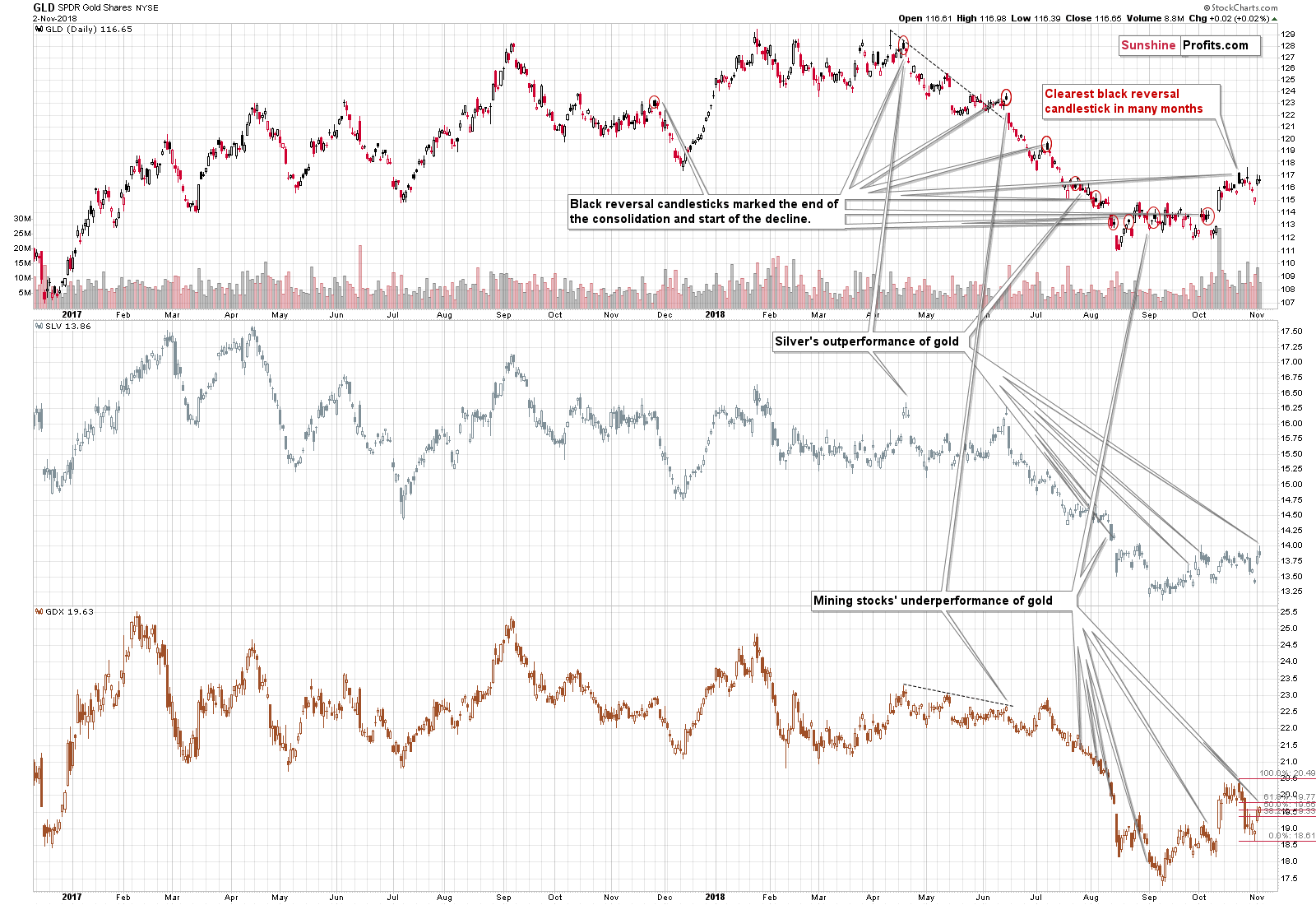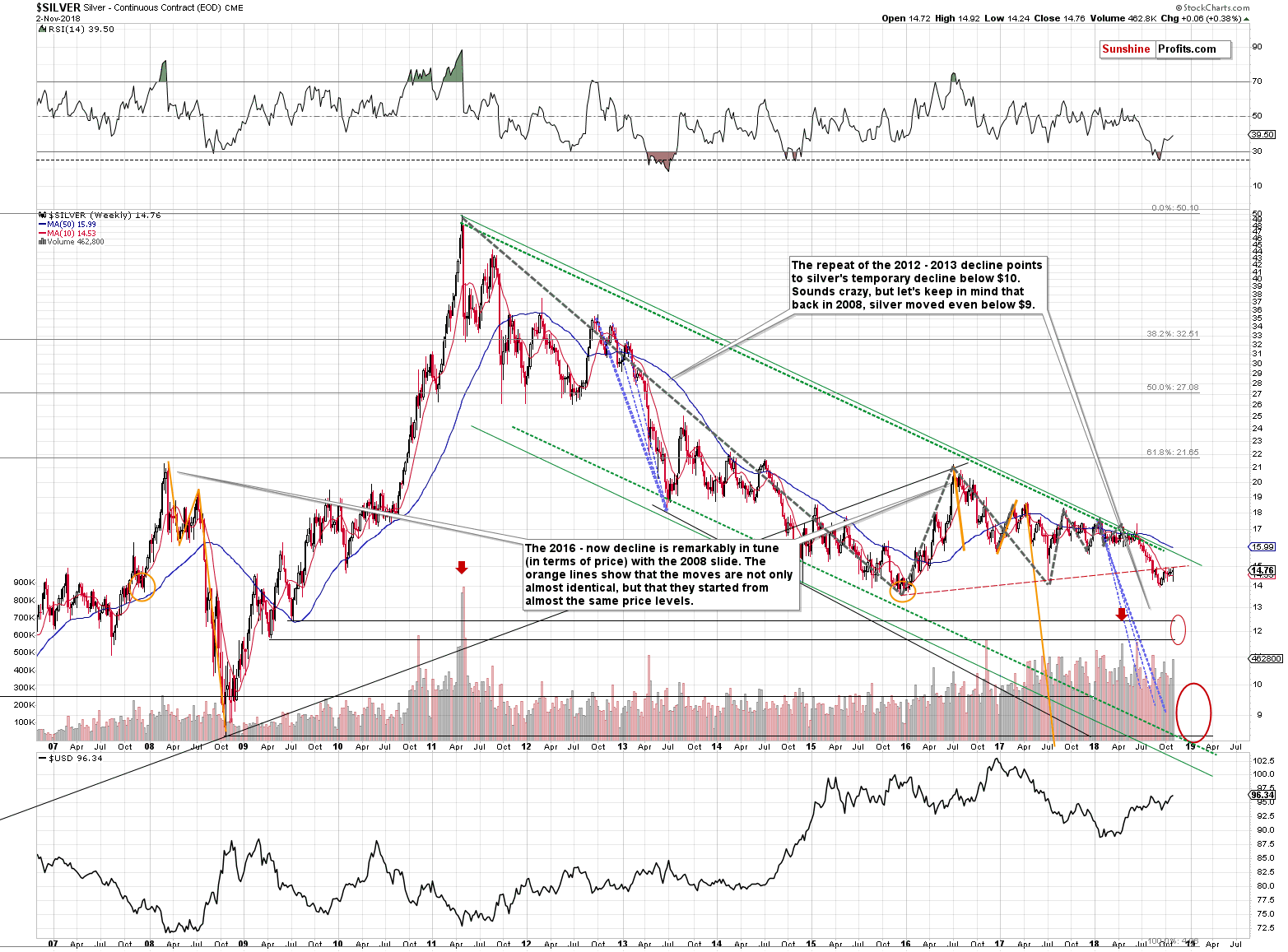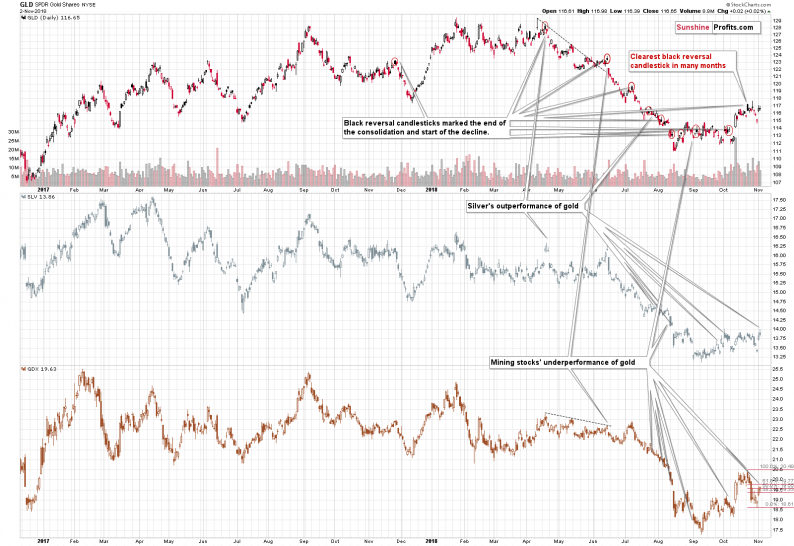USDX’s Friday’s close was its highest weekly closing prices of 2018. This is an extremely significant confirmation of the bullish outlook for the US currency that followed the verification of the breakout above the inverse head-and-shoulders pattern. The implications are clearly bullish for the US dollar. But are they clearly bearish for gold? The yellow metal ended the week close to its October lows and the SLV ETF closed at the highest level since late August. Is the outlook for the precious metals market really bearish?
Yes, it is. Precious metals’ reaction to the action in the USD could be delayed at times and it’s most likely the case also this time. The current times are far from being calm due to the recent volatility on the stock market and because we are just before US elections. Consequently, it’s not that odd to see gold and silver hold up relatively well despite the build-up in the bearish implications from many long-term charts and from the USD Index.
Precious metals’ performance is like a coiled spring. Once the tensions regarding the stock market and elections are gone (or they diminish in a meaningful way – for instance, the business can be back to normal after the elections), gold, silver, and mining stocks are likely to catch up with their signals and decline in a very profound way.
And we have short-term confirmations that this is likely the case.
Relative Valuations

One of the most useful gold trading tips, in general, is the short-term relative performance of silver and mining stocks relative to gold. Local tops are very often accompanied by underperforming miners and outperforming silver. That’s exactly what we saw in the final part of the previous week.
The SLV ETF closed the day above the previous recent daily closing prices, while the GLD ETF didn’t. The GDX ETF (proxy for miners) was only a bit above the 50% retracement from the recent highs. Miners underperformed, while silver outperformed, and the implications are bearish.
SLV’s breakout in terms of the closing prices is an interesting sign on its own as silver is known for its fake breakouts. If silver is breaking above a certain level, but gold and mining stocks are not confirming this sign, the silver breakout is likely a fake one and it’s likely to be followed by an invalidation and – quite likely – a sharp decline.
It’s worth keeping in mind that silver’s breakout is only a very short-term phenomenon.
Silver’s and Gold’s Long-term Signals

From the broad perspective, it’s clear that the white metal remains below the previously broken rising long-term support/resistance line. It’s currently at about $15, so even a move to this level would not change anything from the technical point of view.
The breakdown below this important line and its confirmation makes the move lower very likely. The 2015 lows are quite close to the current price, so it’s unlikely that they will be able to stop the decline. After all, the size of the move that follows a consolidation is likely to be similar to the size of the preceding move. The preceding decline took silver more than $3 lower, so it’s quite likely that we’ll get a slide to about $11 – $12.50 area instead of a one that ends at the 2015 bottom.
As a reminder, that’s not where we expect the decline to end. We may (and are likely to) get a bounce from these levels (perhaps the 2015 bottom will be verified as resistance as silver moves back to it) and then a final decline to the true bottom at extremely scary price levels – quite likely at or below $10.
Gold’s long-term chart can also tell us something interesting.













Leave A Comment